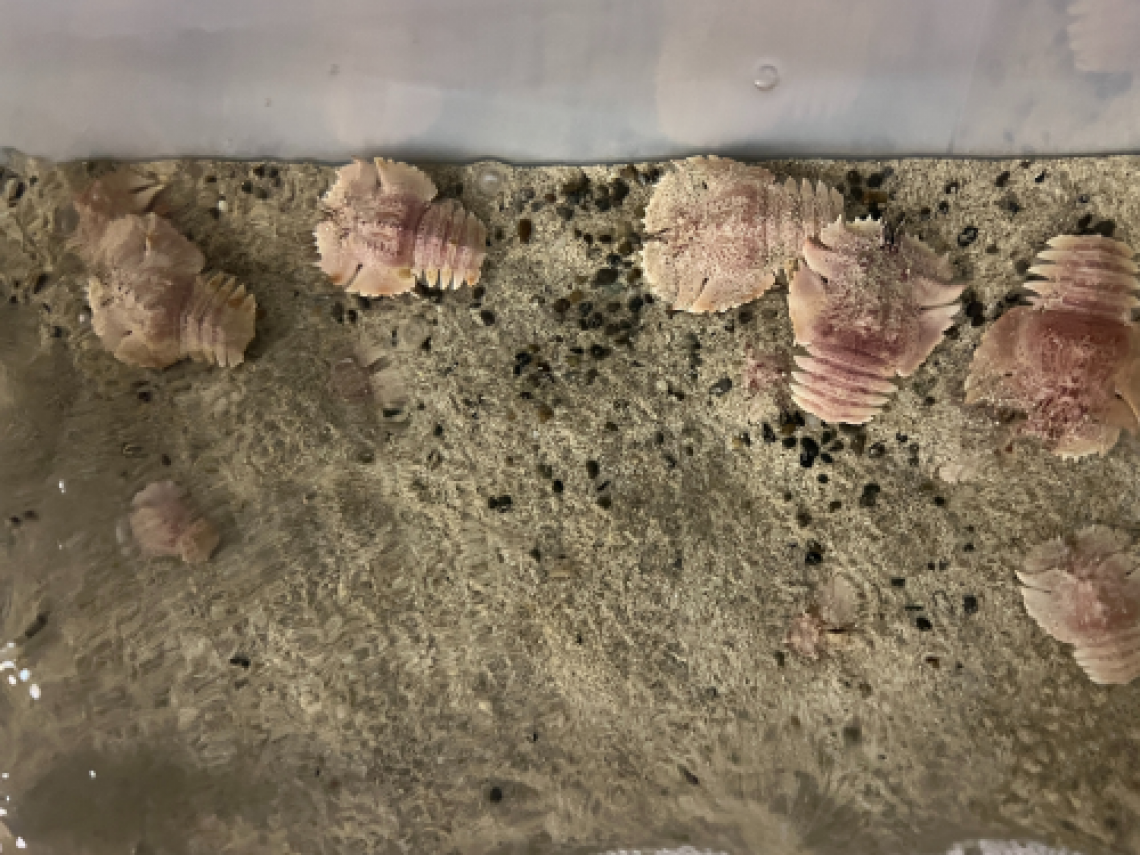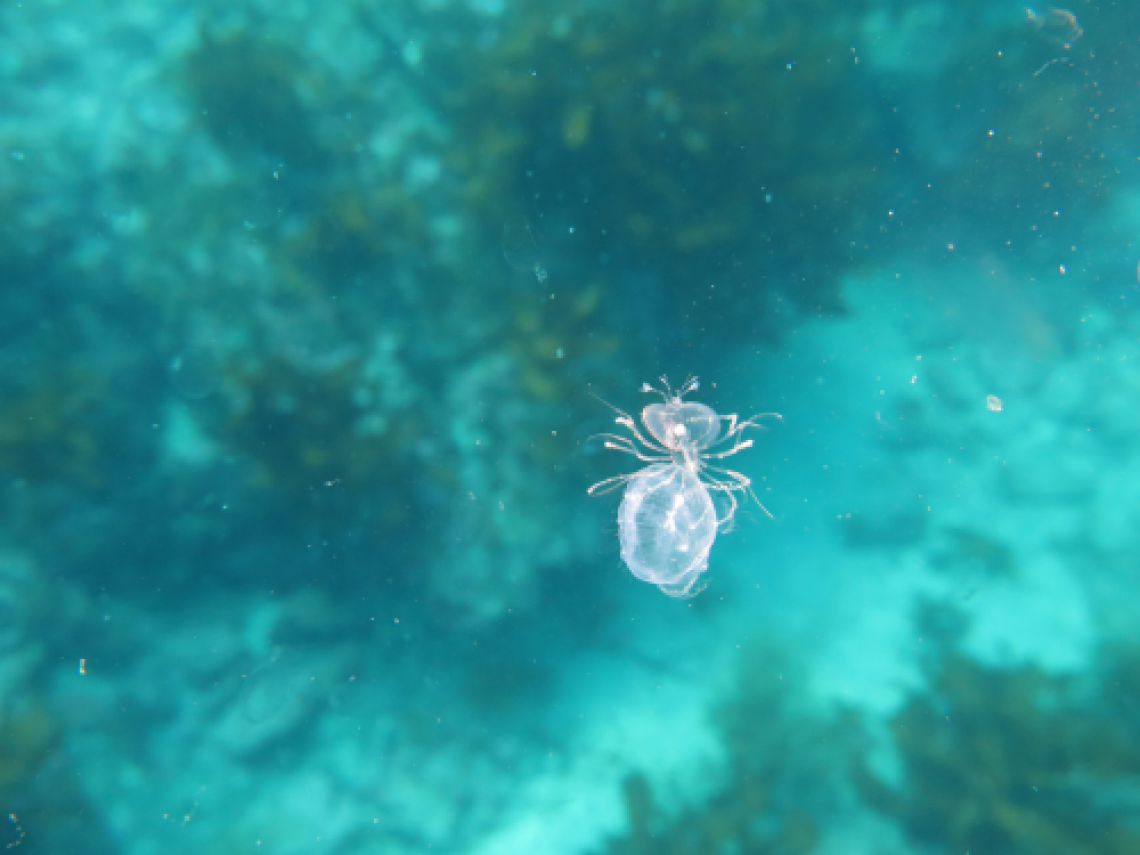Marine biologist Kaori Wakabayashi took on research that uncovered some of the unique behaviors of phyllosoma, the larval form of slipper and spiny lobsters. She has since leaned into these unusual habits for solutions to the century-long scientific quest to farm lobsters.
Their dragon-like appearance has earned lobsters the moniker “dragons of the sea.” It is one reason why they are a favorite fixture during Lunar New Year banquets. The Chinese call them longxia or dragon shrimps. And in some Asian cultures, eating them means imbibing the good fortune, rosy health, and formidable power embodied by the dragon — the most auspicious of the 12 zodiac animals.
While the former is a real-life creature and the latter an imaginary beast, fascinating similarities can be drawn between lobsters and dragons. There’s even an entire Reddit thread on why dragons have more in common with lobsters than reptiles. For one, both don’t stop growing, a unique ability that fueled the myth of lobster immortality. And as scientists discovered, trying to farm lobsters is a feat as elusive as taming fire-breathing dragons of lore. For more than a century, triumph has escaped them. But marine biologist Kaori Wakabayashi is inching science closer to conquering its over 120-year pursuit by letting these “dragons of the sea” get real weird.
Surf ‘n slurp
It all began with a chance inquiry over a decade ago. Wakabayashi said the Tokyo University of Marine Science and Technology laboratory she would later be a part of was shown bizarre “jellyfish riders” a diver couldn’t identify.
“The diver actually collected these animals together with the jellyfish, brought them to our laboratory, and then asked my ex-supervisor what they were,” said Wakabayashi, now an associate professor at Hiroshima University’s Graduate School of Integrated Sciences for Life.
The thin, flat, and transparent creatures with spindly legs clinging to the jellyfish turned out to be phyllosomata, the larval form of slipper and spiny lobsters. Derived from the Greek “phyllo,” which means leaf, these larvae aimlessly waft along the current until they chance upon an unsuspecting prey.
In particular, the ones brought to them by the diver were slipper lobster larvae, which have been documented to hitch rides and munch on jellyfish. Unlike their American lobster (Homarus americanus) and European lobster (H. gammarus) cousins, slipper lobsters are clawless. Their meat, known to be sweet and tasty, comes from the tail. They are also calmer and grow to harvest size quicker than their clawed and spiny lobster relatives making them perfect candidates for aquaculture.
Intrigued by this behavior, the laboratory embarked on a project to further explore its ecological role and tapped her expertise. Wakabayashi had been studying embryology and larval development of starfishes. So her knowledge of marine invertebrates’ younger stages came in handy. “That was the beginning of my involvement in this subject,” she said. Wakabayashi has not looked back since.
Slipper lobsters in tanks at Wakabayashi's laboratory
Swiss army knife-like appendages
Zooming in on appendages, they noticed the larvae’s walking legs, called pereiopods, are barbed with hard spikes perfect for latching on jellyfish. They also found comb-like protrusions styling the tip of the third maxilliped, an elongated appendage for grooming. Just what’s needed by these little critters that love primping as much as surfing and scarfing down their floating prey. As a defense, jellies slime their predators so having specialized limbs to scrape off mucus that may harbor bacteria can be handy.
Given appendages perfectly adapted to a lifestyle of riding on jellyfish, Wakabayashi wondered if a diet exclusively on it could sustain the free-floating larvae until they molt into bottom-dwelling juveniles — the stage they start resembling their adult form. Prior trials have served brine shrimp larvae, fish hatchlings, clams, mussels, abalones, squids, krills, and moon jellyfish to phyllosomata to figure out feeding strategies and their dietary preferences.
“The idea is to use their natural behavior. Since they eat jellyfish in the wild maybe they like them,” Wakabayashi said. She and her colleagues got their answer right away after seeing slipper lobster (Ibacus novemdentatus) larvae break into a feeding frenzy as soon as the jellies joined their tank. Their laboratory had to scramble to catch more jellyfish as the larvae devoured their entire stock in just two to three days.
“They eat so fast we had to go to catch more in the sea again. It’s like having your own babies,” she said.
They found that a diet solely of jellyfish not only supplied enough sustenance but also fast-tracked the usually 1.5-2 months-long planktonic larval phase by letting the slipper lobster skip one development stage.
An appetite for venom
As food may be scarce out in the open sea, Wakabayashi was also curious if slipper lobster larvae could afford to be picky with jellyfish or if they acquired an appetite for venom. She and her co-researchers fed larvae a sampling of these gelatinous creatures ranging from the harmless moon jellyfish to the lethal Portuguese man o' war. The phyllosomata suffered no harm even as they gobbled the deadlier species, venomous tentacles and all.
The secret is in their digestive system. The larvae are shielded from the venomous stingers by an armor of chitin — the same biological polymer making up their tough exoskeleton — lining nearly their entire intestines. They also secrete an impenetrable membrane that seals in the stingers but lets nutrients pass through so exposed parts of their gut are protected.
“Due to climate change, jellyfish populations are increasing and increasing in the natural environment. But humans don't have a way of utilizing them for societal use. So why not use the jellyfish for raising lobsters?” Wakabayashi said.
Slipper lobster (I. ciliatus) larva riding a jellyfish
Although not at par with a dragon’s fabled resistance to fire, she and her co-researchers also observed freshly hatched phyllosoma withstanding exposure to acute concentrations of toxic ammonia, a common issue in aquaculture tanks where decomposing waste like uneaten food and feces can accumulate.
“Exhibiting that lobsters cling to and eat jellyfish in the tank condition is our original finding. Then finding out that this species can eat not only one but a variety of species of jellyfish is also our original finding. Demonstrating that they can complete larval development by only feeding on jellyfish is also our original finding,” Wakabayashi said. “So I am now trying to combine these to develop a technique for commercial farming.”
Her initial trials have already shown progress. She has succeeded in completing the larval stage of Japan’s I. novemdentatus and I. ciliatus as well as Australia’s Thenus australiensis. Only the jellyfish diet produced adults with pale pink exoskeletons compared to the auspicious reddish hue of wild slipper lobsters coveted in Asian markets. Wakabayashi is working to raise slipper lobsters that exhibit the same flushed tones as the wild-caught ones. And as her strides in the secrets of lobster lives taught her, she may soon find the answer to this in its oddest behaviors.
###
About Hiroshima University
Since its foundation in 1949, Hiroshima University has striven to become one of the most prominent and comprehensive universities in Japan for the promotion and development of scholarship and education. Consisting of 12 schools for undergraduate level and 4 graduate schools, ranging from natural sciences to humanities and social sciences, the university has grown into one of the most distinguished comprehensive research universities in Japan. English website: https://www.hiroshima-u.ac.jp/en





